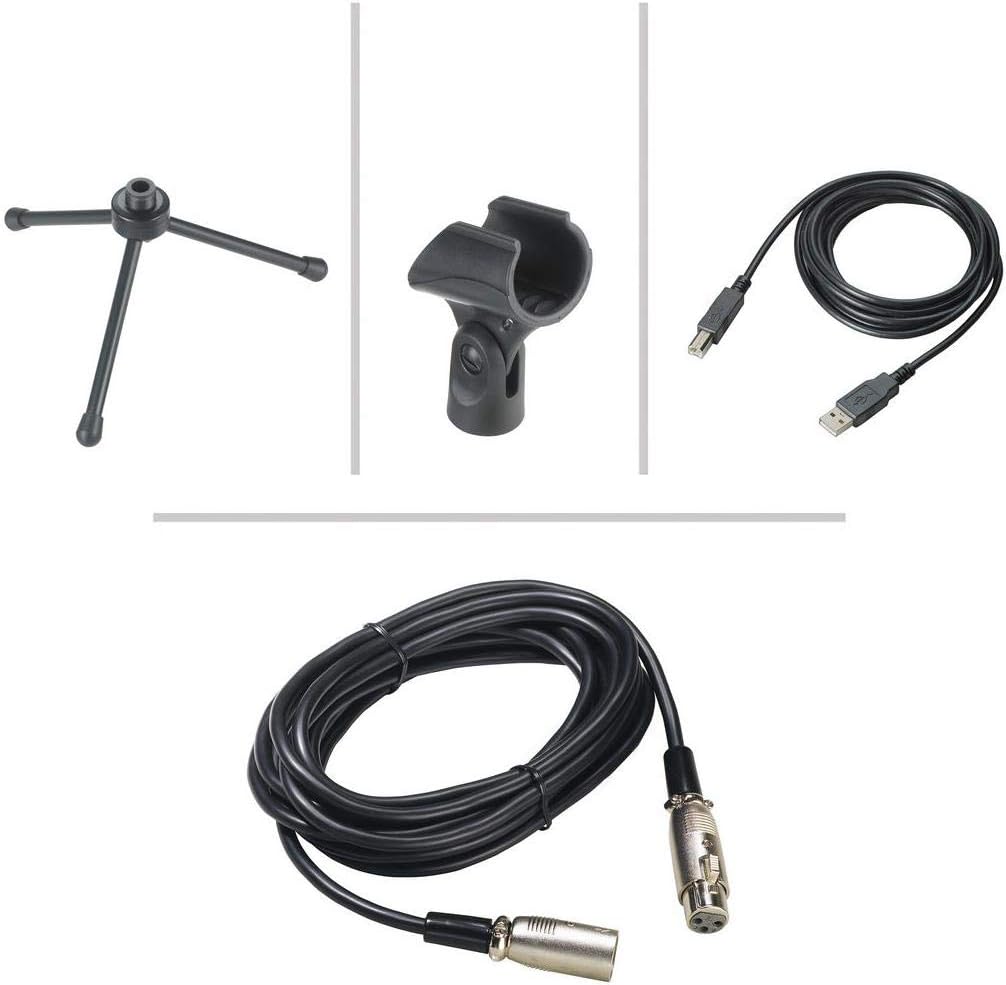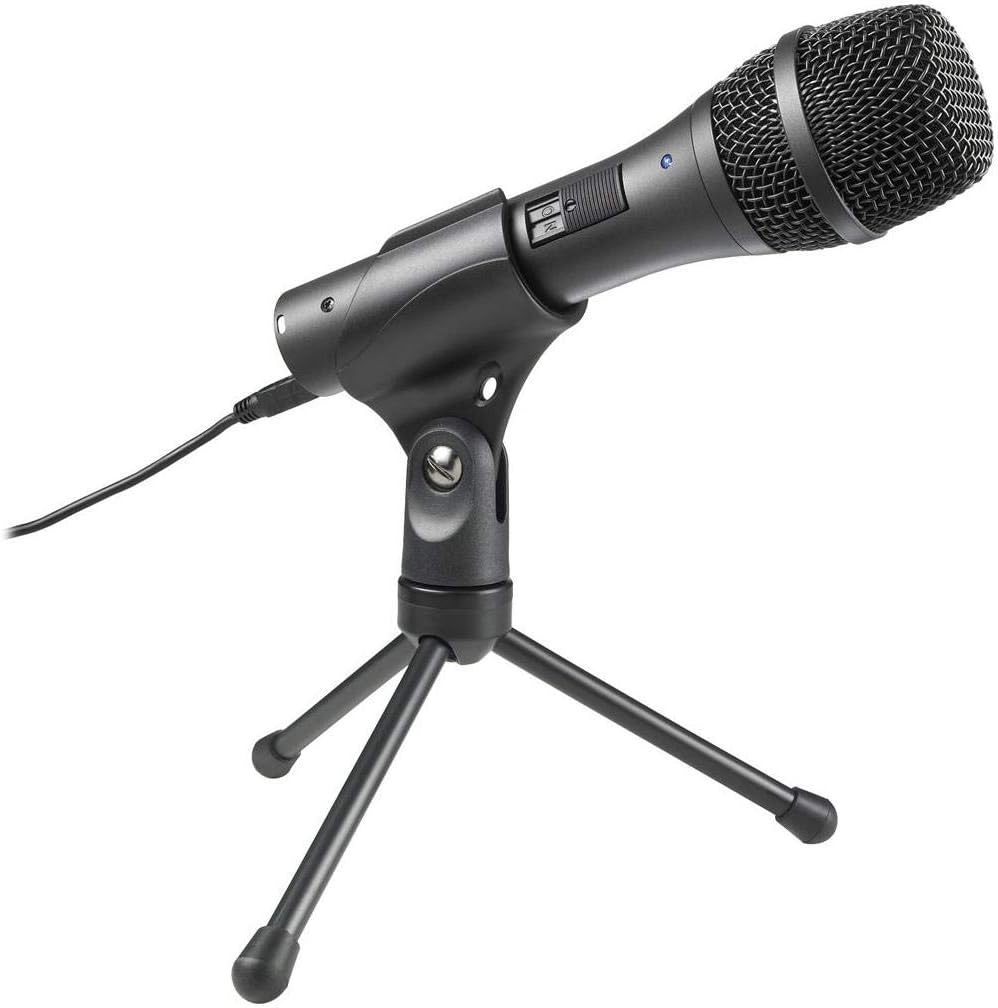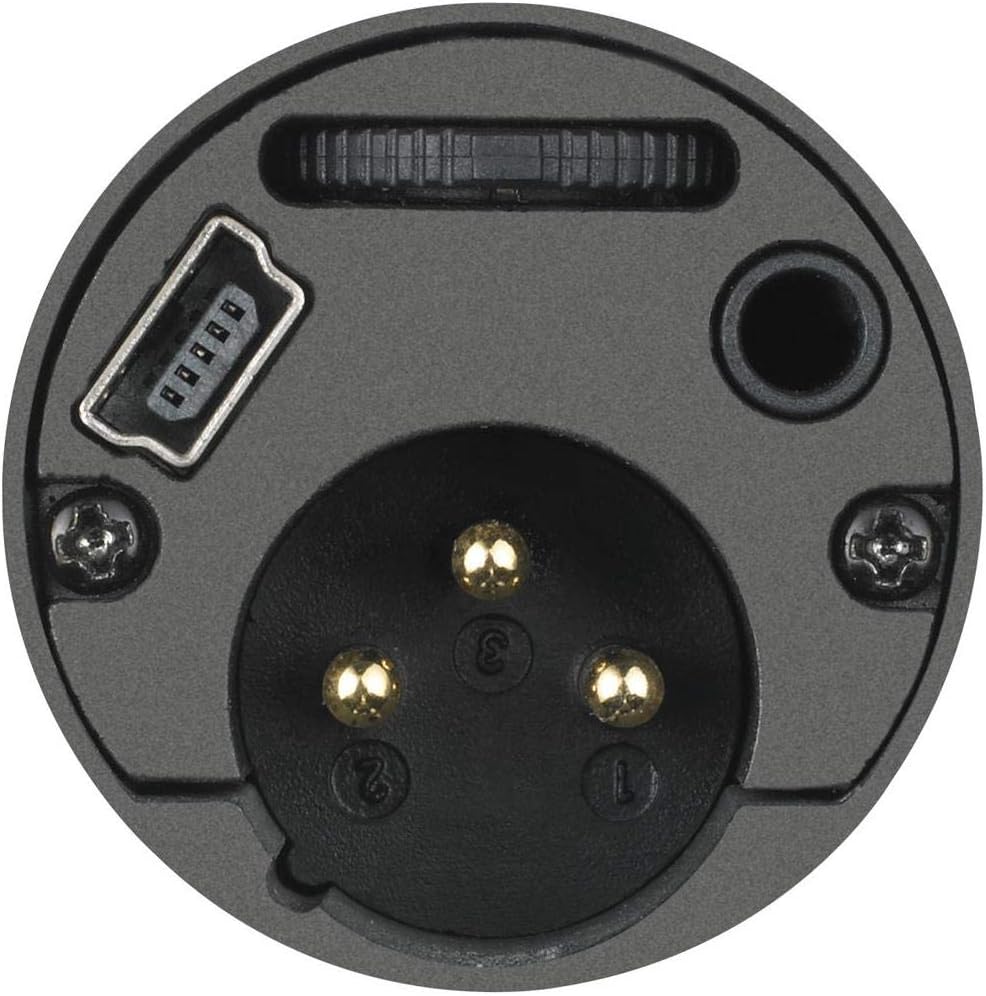Audio-Technica AT2005USB Review
The Audio-Technica AT2005USB is a dynamic microphone that has earned a reputation as a reliable, budget-friendly option for a wide range of audio applications. Whether you’re a podcaster, streamer, musician, or voiceover artist, this microphone promises versatility with its dual USB and XLR connectivity, sturdy build, and straightforward design. In this review, we’ll dive deep into its features, performance, strengths, and weaknesses to determine if it still holds up in 2025 as a worthy contender in the crowded microphone market.
Audio-Technica AT2005USB Review
Released over a decade ago as part of Audio-Technica’s renowned 20 Series, the AT2005USB was designed to bridge the gap between traditional analog recording and the growing demand for digital solutions. Its hybrid USB/XLR output made it a trailblazer at the time, appealing to beginners who wanted plug-and-play simplicity and professionals who needed compatibility with traditional audio setups. Priced typically under $100, it remains an attractive option for those entering the world of audio recording without breaking the bank.
But in 2025, with the microphone market flooded with options from brands like Shure, Rode, and Blue, does the AT2005USB still deserve a spot on your desk or in your gig bag? This review will explore its design, sound quality, usability, and real-world performance to help you decide.
Design and Build Quality: Rugged and Timeless
The Audio-Technica AT2005USB doesn’t try to reinvent the wheel when it comes to aesthetics. It sports a classic handheld microphone design: a sleek, cylindrical body with a black metal grille and a matte dark gray finish. This simplicity ensures it blends seamlessly into any setup, whether you’re recording in a home studio or performing on stage. At just one pound (approximately 266 grams), it’s lightweight enough for extended handheld use yet feels substantial in the hand, thanks to its all-metal construction.
The build quality is one of the AT2005USB’s standout features. Audio-Technica has a reputation for crafting durable gear, and this microphone is no exception. The metal casing feels robust, capable of withstanding the occasional drop or the rigors of travel—perfect for creators on the go. Included in the box are a tripod desk stand, a mic clip, a USB cable, and an XLR cable, making it ready to use right out of the package. The folding tripod stand is a thoughtful addition, offering a stable base for desktop recording, though it’s worth noting that it’s not the most adjustable option for precise positioning.
On the microphone itself, you’ll find a headphone jack with a volume control knob at the bottom, a feature that allows for zero-latency monitoring—a boon for podcasters and vocalists. There’s also an on/off switch, a rarity in USB microphones, which adds convenience for live use or quick muting during recordings. However, the placement of the headphone jack and volume control at the base can feel awkward when the mic is mounted, requiring some fiddling to adjust mid-session.
Overall, the design is utilitarian and built to last, though it lacks the flashy LED lights or modern flourishes of some competitors. For those who prioritize function over form, this is a plus rather than a drawback.
Features: Dual Connectivity and More
What sets the AT2005USB apart from many microphones in its price range is its dual-output functionality. It features both a USB output for direct connection to a computer and an XLR output for use with mixers, audio interfaces, or PA systems. This hybrid approach makes it a future-proof investment: you can start with USB for simplicity and upgrade to an XLR setup as your skills and equipment evolve, all without needing a new microphone.
The USB output is plug-and-play, requiring no additional drivers on modern operating systems like Windows 10/11 or macOS. It delivers 16-bit audio at sample rates of 44.1 or 48 kHz—CD-quality resolution that’s sufficient for most casual recording needs. While it doesn’t match the 24-bit depth of higher-end USB mics, this spec is more than adequate for podcasting, streaming, or basic music recording.
The XLR output, meanwhile, opens the door to professional-grade setups. Pair it with a quality preamp or audio interface, and the AT2005USB can hold its own in live performances or studio environments. This versatility is rare at this price point and makes it an excellent “starter” microphone with room to grow.
The microphone uses a cardioid polar pattern, meaning it picks up sound primarily from the front while rejecting noise from the sides and rear. This directional focus is ideal for untreated rooms, as it minimizes background noise like fans, keyboards, or ambient chatter—a critical feature for streamers or podcasters working in less-than-ideal acoustic spaces.
Additional features include the aforementioned headphone jack for direct monitoring and a low-mass diaphragm, which enhances response time for clearer audio capture. The package also includes a zippered pouch for storage, though some users recommend adding a foam windscreen (sold separately) to reduce plosives (those pesky “p” and “b” pops).
Sound Quality: Warm and Reliable
As a dynamic microphone, the AT2005USB is designed to deliver a focused, warm sound with less sensitivity to room noise compared to condenser mics. Its frequency response spans 50 Hz to 15 kHz, which is slightly narrower than some competitors but well-suited for voice-based applications like podcasting, voiceovers, and streaming.
In testing, the AT2005USB produces a smooth, natural tone with a slight emphasis on midrange frequencies, giving voices a rich, authoritative quality. The bass response is present but not overpowering, avoiding the muddiness that can plague budget mics. Highs are clear without being harsh, though they taper off above 15 kHz, meaning it’s not the best choice for capturing intricate treble details in music recording (e.g., cymbals or stringed instruments).
The cardioid pattern shines in noisy environments. During a test in a room with a humming air conditioner and distant traffic sounds, the mic effectively isolated the speaker’s voice, picking up minimal background interference. This makes it a strong contender for creators who can’t afford extensive room treatment.
However, the AT2005USB isn’t flawless. Its sensitivity is relatively low, requiring you to speak or sing close to the mic—within 2-6 inches—for optimal volume. This proximity effect can boost bass when you’re too close, which may require EQ adjustments in post-production. Additionally, some users report that the USB output can sound quieter than expected, necessitating a boost in software or hardware gain, which could introduce slight noise in extreme cases.
Compared to condenser mics like the Blue Yeti or Audio-Technica’s own AT2020, the AT2005USB lacks the airy brightness and wide frequency range that make those models better for studio-grade music recording. But for its intended audience—beginners and voice-focused creators—it delivers a solid, professional sound at a fraction of the cost.
Usability: Plug, Play, and Perform
One of the AT2005USB’s biggest selling points is its ease of use. For USB operation, simply plug it into your computer, select it as your input device, and start recording. It works seamlessly with popular software like Audacity, GarageBand, or OBS, making it a favorite among streamers and podcasters. The lack of driver installation is a time-saver, though older systems (e.g., Windows 7) might occasionally require troubleshooting for gain issues.
The XLR mode is equally straightforward. Connect it to a mixer or interface with the included cable, and it behaves like any standard dynamic mic. The on/off switch is a handy touch, allowing you to mute the mic without fumbling in software—a feature live performers will appreciate.
The headphone monitoring is a standout feature, offering latency-free playback of your voice as you record. The volume control knob is responsive, though its placement at the bottom can be inconvenient when the mic is tripod-mounted. Some users have noted that the headphone output is quieter than expected, requiring high-sensitivity headphones or a slight boost in your recording software.
For portability, the AT2005USB is a champ. Its compact size, durable build, and included accessories make it easy to toss into a bag for field recording or gigs. The tripod stand is functional for quick setups, but serious users might want to invest in a boom arm or shock mount for better positioning and vibration isolation.
Real-World Performance: Who Is It For?
To evaluate the AT2005USB’s real-world performance, let’s consider its primary use cases:
Podcasting
For podcasters, the AT2005USB is a near-perfect fit. Its cardioid pattern and dynamic design excel at rejecting room noise, delivering clear, warm vocals even in untreated spaces. The USB connectivity simplifies solo or remote recording, while the XLR option allows for multi-mic setups with a mixer. The sound quality rivals mics twice its price, making it a top choice for beginners or budget-conscious creators.
Streaming and Gaming
Streamers and gamers will appreciate the mic’s ability to isolate voice from keyboard clacks or fan noise. The headphone monitoring ensures you can hear yourself without lag, crucial for live broadcasts. However, the low sensitivity means you’ll need to position it close to your mouth, which could clutter your camera frame unless paired with a boom arm.
Live Performance
On stage, the AT2005USB performs admirably via XLR. Its rugged build and feedback rejection (thanks to the cardioid pattern) make it a solid choice for singers, speakers, or emcees. It won’t match the nuance of a Shure SM58, but for the price, it’s a versatile backup or starter mic.
Music Recording
For music, the AT2005USB is best suited to vocals or close-miked instruments like guitar amps. Its frequency range and dynamic nature limit its ability to capture the full spectrum of acoustic instruments or complex mixes. If music is your focus, a condenser mic might be a better long-term investment.
Voiceovers and Screencasts
Voiceover artists will find the AT2005USB’s warm tone and ease of use appealing. It’s not as detailed as a studio condenser, but for narration or e-learning projects, it gets the job done with minimal setup.
Pros and Cons
Pros
- Dual USB/XLR connectivity: Rare versatility at this price.
- Durable build: Metal construction ensures longevity.
- Great value: Professional sound for under $100.
- Cardioid pattern: Excellent noise rejection for untreated rooms.
- Headphone monitoring: Zero-latency playback is a big plus.
- Plug-and-play: No drivers needed for USB use.
Cons
- Low sensitivity: Requires close proximity and possible gain boost.
- Limited frequency range: Not ideal for detailed music recording.
- Headphone output: Can be quiet, limiting monitoring options.
- Basic stand: Functional but lacks adjustability.
Comparison to Competitors
How does the AT2005USB stack up against similar mics in 2025?
- Audio-Technica ATR2100x-USB: A close sibling, the ATR2100x offers nearly identical performance with a slightly updated design and a 24-bit ADC for $20-$30 more. The AT2005USB remains a better deal if 16-bit audio suffices.
- Shure MV7: At over $200, the MV7 provides superior sound, dynamic range, and software controls but lacks the AT2005USB’s simplicity and lower cost.
- Blue Yeti: A condenser mic with broader appeal, the Yeti offers multiple patterns and richer sound for $130, but it’s less forgiving in noisy environments.
- Samson Q2U: Another USB/XLR hybrid, the Q2U is a direct competitor with similar specs and pricing. The AT2005USB edges it out in build quality and brand reliability.
The AT2005USB holds its own as a budget-friendly, no-frills option, though it’s outclassed by pricier mics in sound fidelity and features.
The Bottom Line
The Audio-Technica AT2005USB remains a compelling choice for creators seeking an affordable, versatile microphone. Its dual connectivity, durable design, and solid sound quality make it an excellent entry point into audio recording, whether you’re podcasting in your bedroom or performing at a local venue. It’s not the flashiest or most advanced mic on the market, and its limitations—low sensitivity, narrow frequency range, and basic accessories—mean it won’t satisfy everyone, particularly those focused on high-end music production.
However, for its target audience—beginners, budget-conscious creators, and hybrid USB/XLR users—it delivers exceptional value. In a world where new mics launch monthly, the AT2005USB’s longevity speaks to its reliability and utility. If you’re starting your audio journey or need a dependable all-rounder, this microphone is a worthy investment that won’t disappoint.




